-
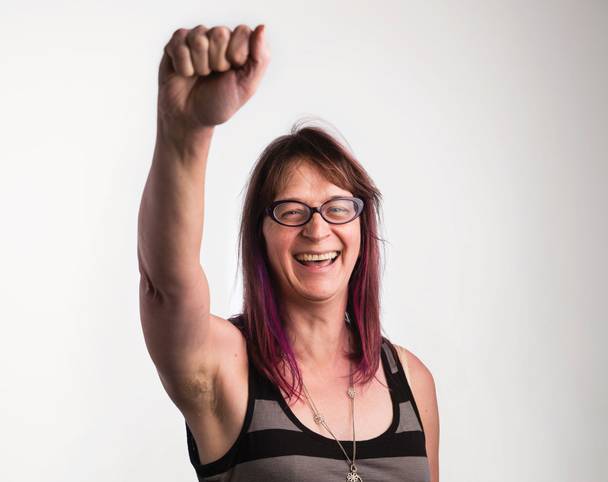
Jane Heenan
Before transgender issues started gaining mainstream visibility, marriage and family therapist and Gender Justice Nevada Director Jane Heenan was fighting for trans rights. Having moved to Las Vegas in 1994, Heenan has worked extensively with local communities to create a safe space for gender-nonconforming people. “I have been queer since I can remember,” Heenan says. “Like a lot of trans folk, I was not a part of the queer communities in any kind of conscious way when I was younger. I hid this stuff. These things were not a part of what I wanted other people to know about me.”
As a therapist in the ’90s, Heenan led group sessions for trans people. It was a time of self-discovery, too, and a spark of activism. In 1999 Heenan challenged the employment non-discrimination bill proposed by then-Nevada State Assemblyman David Parks, because it didn’t include protections for gender identity. “If you protect people on the basis of sexual orientation, you’re protecting straight-acting gay, lesbian, bisexual persons, and straight people, too,” Heenan says. “That’s great, except the people who are targeted for differential treatment are targeted on the basis of visible difference. Straight-acting people aren’t really experiencing harm, or so much harm. ... Visibly different people—specifically trans, intersex, queer people—are experiencing harm, so let’s add gender identity or expression to the legislation that we’re pursuing.”
Heenan has been pressured to not rock the boat, often hearing that Las Vegas wasn’t prepared to address transgender issues. “We invisible-ize trans-queer people. We omit and exclude these things that are true because it doesn’t fit the party line—it doesn’t fit the way the story is supposed to be told,” Heenan says. That 1999 non-discrimination bill passed without protections for gender identity or expression, and it wasn’t until 2011 that legal protections finally were extended to trans people. Considering it a celebratory milestone, Heenan planned to move to Oregon. “Somebody told me, ‘You know, Jane, that’s great, but they’re just words on a page. We really need to do something further to help support these things.’ That’s really what Gender Justice Nevada comes out of.”
Now in its fourth year, GJN offers inclusive therapy groups, 24-hour hotlines, legal assistance, outreach and more. Despite being director, Heenan doesn’t identify as a leader as much as an anarchist. “I’ve never been a joiner. ... I fundamentally disagree with hierarchies. I’m doing this ’cause people are telling me we need to do this in order to make a difference in people’s lives, and I know we are making a difference.”
-
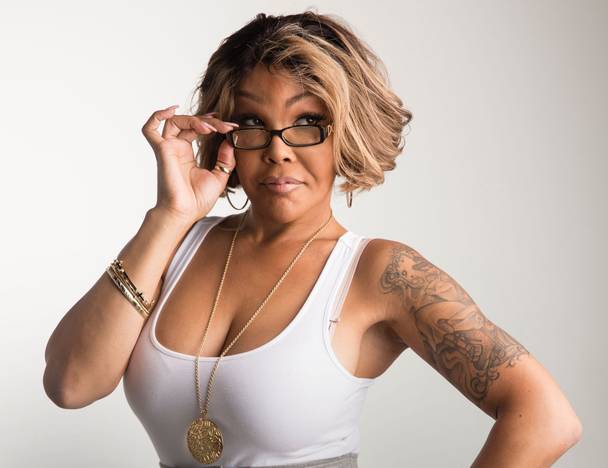
Lisa St. Laurent
“My day is very simple,” says Lisa St. Laurent, a 45-year-old bartender at the Las Vegas Lounge and Miss Pride 2015. “I’ve been [at the Lounge] 16 years. It’s a bar that caters to trans [people], anyone who cross-dresses, whatever. We get gay guys and lesbians and couples, people that are curious or have a taste for it.”
St. Laurent says she realized she was trans as a teenager, but like some trans people, she originally thought she was gay. With a father in the Marines, St. Laurent “didn’t want to be a disappointment,” so she moved out at 14. “That night, I went out to go to the store and ran across this trans girl, and she introduced herself. Obviously I didn’t know. I thought this was a beautiful black girl in front of me. … She said, ‘Oh, I’m not a girl,’ and she explained the situation and that was it— the deal was sealed.”
More than 32 years after her transition, St. Laurent says there are still a lot of stereotypes regarding the trans community that need dismantling, even in places where inclusiveness seems vital to the mission statement. “There’s a certain type that America likes to put out there, and we’re not all like that," she says. "In 2005, I went to the local Center and I wanted to help my sisters and reach out to them. The Center basically looked at me and wouldn’t help me. They thought I was like everyone else and pretty much closed the door in my face. People, straight and gay, don’t understand the unknown, so you get a lot of discrimination or people who look down on you."
Now, St. Laurent is respected throughout the community, “but when I first came on the scene, I would get a lot of flack. I was a working girl at one point … but that part of my life I own. I’ve never done drugs. I don’t drink. I’ve been very fortunate in my life.”
-
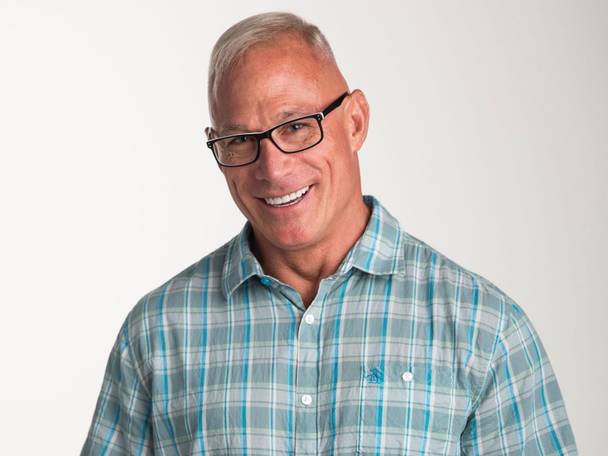
Tiger Devore
“The first Pride Parade I was in, I marched down Hollywood Boulevard,” recalls clinical psychologist and sex therapist Tiger Devore. “The Christians on the sidelines, with their big signs with all the quotes from the Bible, were throwing rocks at us. We had to be put into a pen behind a chain-link fence surrounded by police so that no violence would be done to us.” That was 1974. Devore was only 16.
An intersex person, Devore has been working to bring awareness to intersex and sexually different people for 30 years, and has celebrated Pride even longer. “I’ve seen Pride become this open celebration where hundreds of thousands of people can show up and feel like they can come in contact with their community in relative safety … and feel like they belong to a community of others that they can identify with. That’s what’s most important—the sense of not being isolated and alone.”
Born in 1958 with ambiguous genitalia, Devore underwent several unnecessary medical procedures as a young child. “I suffered under a lot of childhood surgeries that I couldn’t give consent for and were pretty mutilating and terrible,” Devore says. “People who are sexually different in our culture have always found respite in the gay-lesbian culture. The study that I did in 1985 shows that a fair percentage, a much higher percentage of people who are intersex, tend to be [lesbian, gay or bisexual] than the general population—something like 40 percent. So in the same way that lesbian and gay people are oppressed, intersex people are oppressed.”
And while the standard of care for intersex infants and children is improving, Devore says it’s still riddled with medical inaccuracies. “We tried the best we could to make [intersex kids] into boys or girls. [Now], we’re doing the best we can worldwide to change that, so that bodily integrity and right to self-determination are basic human rights of the child. Gender is something that is part of how our brains are wired, part of hormonal influence in utero. There are those of us who are male, those of us who are female, and those of us who are somewhere in-between," Devore says. "That’s why I identify as intersex. I’m not like guys. I’m not like girls. My emotional structure isn’t that way. The way I see the world around me isn’t that way. I’m not typically like either sex. That’s the truth of my experience and a lot of other intersex people that I have known.”
-
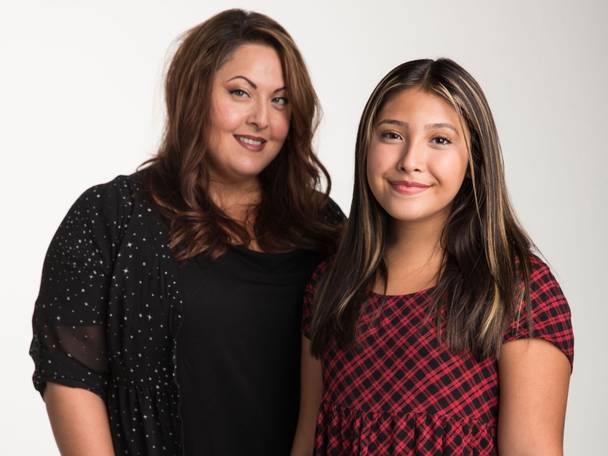
Laura and Kristina Hernandez
Kristina Hernandez was always feminine, “drawn to dolls and fashion and sparkly things,” says her mother Laura. But when Kristina, born biologically as a boy, told her mother she was a girl at age 4, Laura went into panic mode. “I always thought I was super-progressive until she came to me and said, ‘I’m a girl.’ I was like, ‘Oh no, I screwed up; I need to fix this.’”
Laura spent years trying to “undo” her daughter’s femininity, entering her into tai kwon do classes and buying superhero toys, hoping her interest in girly things would fade. It didn’t. “It was starting to get scary. I thought she might hurt herself, so I started searching around to find a gender therapist,” Laura recalls. The Hernandez’s started seeing Gender Justice Nevada Director Jane Heenan, and soon, Kristina had her mother’s support to transition. “What I needed was a kick in the ass,” Laura says. “I needed somebody to be firm with me, to say, you need to see your child.”
“There was a lot of judgment with people because I didn’t switch schools,” Kristina says about her transition, although she did transfer the next year. “I had days where I’d be an hour late because I wouldn’t get out of the car. I always felt like I was going to walk in and be judged—and I mean, I was. The kids aren’t even the problem—it’s the administration.”
Kristina recounts the discrimination she faced—not getting school lunches because her ID said she was male, having to use the bathroom in the nurse’s office and changing for P.E. in the counselor’s room instead of at the lockers with everyone else. “It always had to be her trying to explain herself,” Laura says. “There was no kind of consideration, no protection for her at all.”
Despite years of struggle, Kristina’s situation has improved tremendously. In 2014 she was cast as the lead in the 2015 Student Academy Award-winning film Stealth, which tells the story of a young transgender girl named Sammy. “For another actress, they’re just playing a role,” Laura says. As for her daughter, Kristina puts it best: “This is my life.”
-
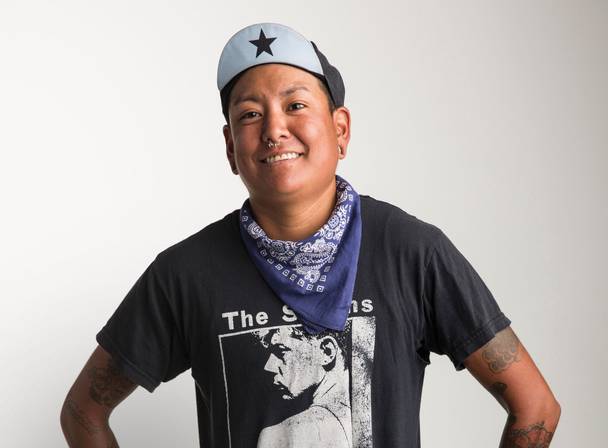
T Cutter
“I’ve never really been comfortable identifying as a lesbian or identifying as female after learning that there are folks who live not as their born gender,” says T Cutter, a queer, transmasculine person of color. Cutter moved from Hawaii to Las Vegas 15 years ago and graduated from UNLV with a degree in women’s studies and sociology in 2014. “It wasn’t until maybe last year that I started meeting other trans folks, gender-queer folks, and learning how they express their identity. Gender is so complex and layered and complicated,” Cutter says. "Being in that circle opened my eyes.”
When Cutter decided to identify as transgender, it seemed the only option was to be a trans man. “’Cause I was female,” he says. “But I never felt comfortable owning that. I would just stay up at night thinking, oh my god, I don’t want to be a man. Not that I hate men, it just didn’t feel like something I’d ever be comfortable with passing through the world as. It felt really scary and too much, and I didn’t want that. I still don’t want it. But it’s going to happen. I don’t know what to do with that kind of power.”
Pride
- The state of LGBT community engagement in Las Vegas
- Gender identity, through the eyes of six Las Vegans
- How the Fruit Loop came to be
- Why coming out to your doctor is important
- Now that it's legal across America, is there pressure for same-sex couples to get married?
- Say it loud: As another Pride unfolds, what are you celebrating?
- Pops of Pride: These hot spots keep the party going all year
- Weekly Q&A: Lisa Pittman (aka Pride’s gift to women) talks Shedonism, community and dope music
- Las Vegas Pride 2015 Weekend Events Guide
Cutter explains that in college, he was “immersed in this feminist ideology and this idea that all our problems are based on this capitalist patriarchy,” adding, “It’s not that I’m pointing the finger at all men, but I’m going to be a part of that. I’m going to assume that role, and that scares the sh*t out of me.”
Cutter has been on a low dose of testosterone since October. He sees subtle changes—his voice is deeper and he’s got a bit more hair—but above all he’s noticed the way men treat him—calling him “bro” and being more passive than before. In a way, these less obvious social cues have made the transition feel even more real. “I was just like, ‘I’m actually doing this.’ It made me very emotional on top of the fact that I’m putting things in my body that alter [it].”
Androgyny has always been appealing to him, he says. Cutter grew up with his family always calling him Terry and, as a child, people often thought he was a boy. “I was never offended, I just went with it. It excited me that people thought I was not a girl—that was attractive, not being female. Even before transitioning, I was battling with this idea: all I want is this magic wand to wave and everybody to see everybody for who they are and not their gender.”
Features
[Pride]
Gender identity, through the eyes of six Las Vegans
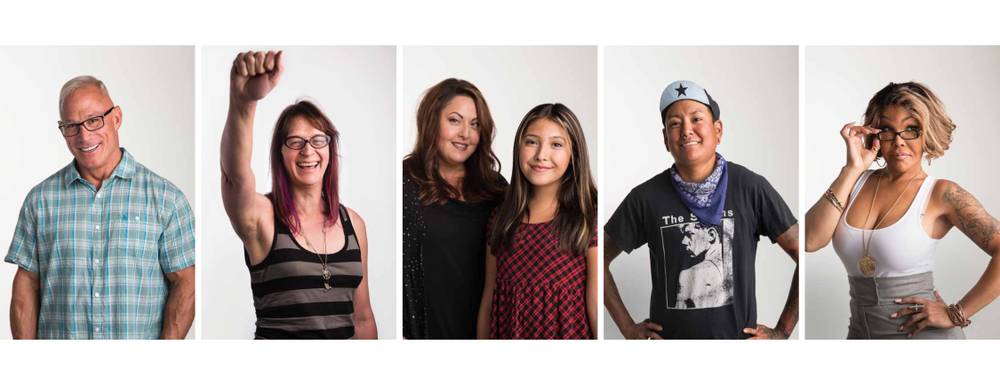
Photo:
Christopher DeVargas









